In the lightless abyss of the deep ocean, where pressure crushes and temperatures plummet, life has evolved extraordinary adaptations to survive. Among the most fascinating of these adaptations is bioluminescence—the ability of living organisms to produce light. This phenomenon serves multiple purposes in the deep sea, but perhaps its most remarkable application is as a defense mechanism against predators. Unlike the terrestrial world where hiding in shadows offers protection, many deep-sea creatures have developed the counterintuitive strategy of using light itself to evade, confuse, and deter would-be attackers. This bizarre trait has evolved independently across numerous species, creating a silent light show in an environment where sunlight never reaches and survival depends on mastering the darkness.
The Fundamentals of Bioluminescence

Bioluminescence is the production and emission of light by living organisms through a chemical reaction. In most marine creatures, this reaction involves a substance called luciferin, which produces light when it reacts with oxygen. This process is catalyzed by an enzyme called luciferase. The resulting glow can range from blue-green to red, depending on the species and the specific chemicals involved.
Unlike phosphorescence or fluorescence, bioluminescence requires no external light source to trigger it—the light is generated entirely through biochemical reactions within the organism. This makes it particularly valuable in the deep sea, where sunlight cannot penetrate beyond about 1,000 meters. Scientists estimate that more than 76% of deep-sea creatures possess this remarkable ability, making the deep ocean the largest bioluminescent ecosystem on Earth.
Counterillumination: The Art of Disappearing
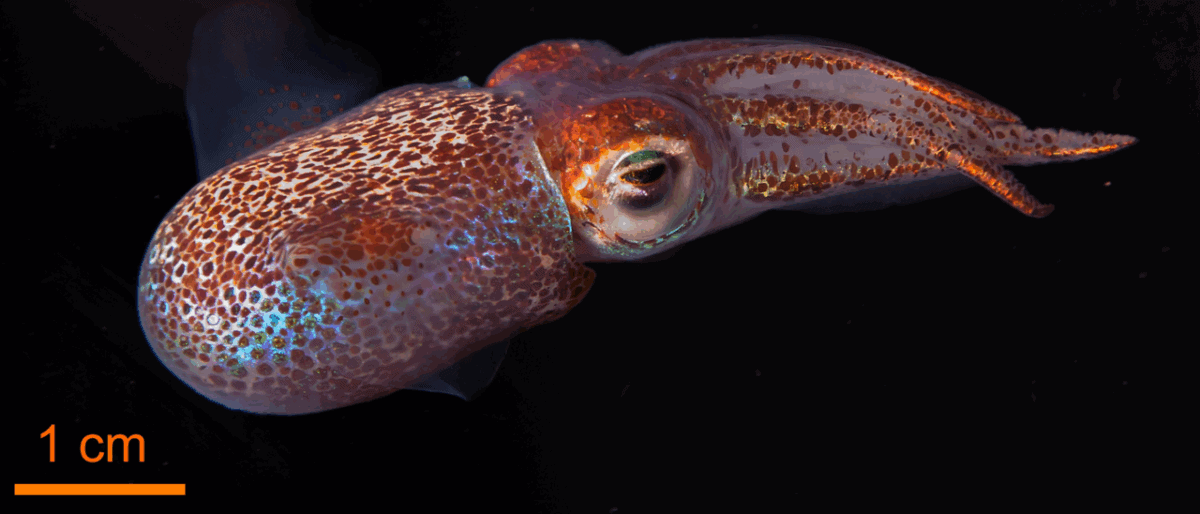
One of the most sophisticated bioluminescent defense mechanisms is counterillumination, a form of camouflage used by mid-water creatures like squid, shrimp, and some fish. These animals possess light-producing organs called photophores on their undersides. When viewed from below against the faint downwelling light from the surface, a non-luminous creature would appear as a dark silhouette—an easy target for predators. Counterillumination solves this problem by producing light that matches the intensity and color of the downwelling light, effectively erasing the creature’s silhouette.
The Hawaiian bobtail squid (Euprymna scolopes) has taken this strategy further by forming a symbiotic relationship with bioluminescent bacteria (Vibrio fischeri) that colonize special light organs. The squid can control the intensity of the bacterial light, ensuring perfect camouflage as it moves through different depths. This sophisticated form of camouflage is the marine equivalent of invisibility, allowing creatures to hide in plain sight.
The Burglar Alarm Strategy

Some deep-sea creatures employ what scientists call the “burglar alarm” strategy—a defensive technique that turns the tables on approaching predators. When threatened, species like the deep-sea jellyfish Atolla wyvillei produce an intense circular pattern of blue light. This conspicuous display might seem counterproductive, but it serves a clever purpose: it attracts even larger predators to the area.
The bioluminescent display essentially broadcasts the location of the initial attacker to bigger threats in the vicinity, creating a dangerous situation for the original predator. The Atolla jellyfish, sometimes called the “alarm jellyfish,” can produce this circular light display for up to 10 minutes, giving ample time for secondary predators to arrive. This strategy transforms the potential prey into a threat signaler, using light to create a predatory risk for its attackers—a sophisticated example of turning defense into an indirect offense.
Sacrificial Appendages: Light-Up Decoys
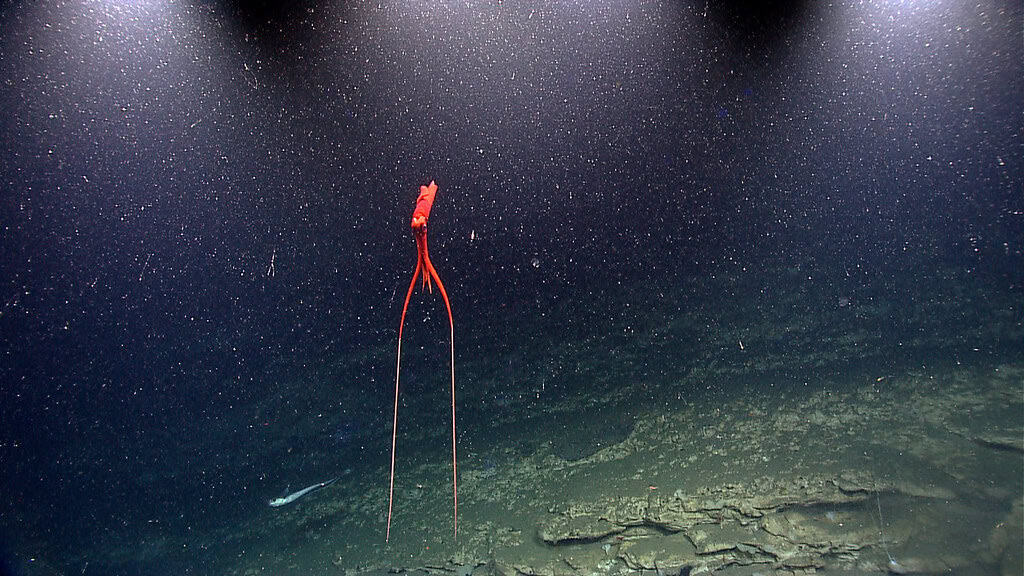
Several deep-sea creatures have evolved the ability to detach glowing body parts as decoys to distract predators—a strategy known as autotomy. The deep-sea squid Octopoteuthis deletron can break off its bioluminescent arm tips, which continue to flash and wiggle after detachment, diverting a predator’s attention while the squid escapes in the opposite direction. Similarly, some species of brittle stars can detach their glowing arms when threatened.
These severed appendages continue to luminesce and move, creating perfect diversionary tactics. The remarkable aspect of this defense is that many of these creatures can regenerate their lost appendages over time, making it a renewable defense mechanism. This sacrificial strategy represents an evolutionary calculation where losing a body part is preferable to losing life—a dramatic example of how bioluminescence can be integrated with physical adaptations to enhance survival.
Photophores: Nature’s Light Organs

The biological structures that produce bioluminescence, called photophores, represent some of the most specialized organs in the animal kingdom. These range from simple light-producing cells to complex structures with lenses, reflectors, and color filters—essentially biological spotlights. The lanternfish (family Myctophidae) possesses hundreds of photophores arranged in species-specific patterns along its body. These patterns serve as a form of identification, helping lanternfish recognize members of their own species in the darkness.
The stoplight loosejaw dragonfish (Malacosteus niger) has evolved particularly specialized photophores that can produce red light—extremely rare in the deep sea. Most deep-sea creatures cannot see red light, giving this predator a form of “invisible” spotlight to hunt with. The complexity of photophores varies tremendously across species, with some containing crystalline structures to direct light, pigmented layers to filter wavelengths, and reflective tissues to amplify brightness, demonstrating the evolutionary investment in these specialized light-producing organs.
Smoke Screen Emissions: Living Clouds of Light

Some deep-sea creatures have developed the ability to emit clouds of bioluminescent material, creating a marine version of a smoke screen. When threatened, the deep-sea shrimp Acanthephyra purpurea, commonly known as the “fire shrimp,” can expel a cloud of bioluminescent fluid from glands near its mouth. This glowing cloud temporarily disorients predators while the shrimp makes its escape. Similarly, certain species of copepods release a bioluminescent secretion when disturbed.
These tiny crustaceans (typically only 1-2 mm long) can create a disproportionately large cloud of blue light, obscuring their actual position and movement. The vampire squid (Vampyroteuthis infernalis) employs a variation of this strategy—instead of ink, it ejects a sticky cloud of bioluminescent mucus that can glow for up to 10 minutes, plenty of time for the squid to vanish into the darkness. These luminous smokescreens represent a highly effective short-term defense that capitalizes on the disorienting effect of sudden bright light in an otherwise dark environment.
Flashing Patterns: Communication and Confusion

Many deep-sea creatures can produce complex patterns of flashing lights that serve dual purposes: communication with potential mates and confusion of predators. The deep-sea squid Taningia danae possesses large light organs at the tips of two of its arms that can produce powerful flashes. When threatened, it creates rapid, disorienting flashes that can temporarily blind or confuse predators—a deep-sea version of a strobe light defense.
Certain species of dinoflagellates (single-celled plankton) flash when disturbed, creating a “burglar alarm” effect that may reveal the presence of predators to larger animals. The cookie-cutter shark (Isistius brasiliensis) uses bioluminescence in a different way—its underside glows except for a dark “collar” around its throat. When viewed from below, this pattern breaks up its silhouette, potentially making it appear as a much smaller creature to larger predators. These flashing patterns demonstrate how light can be used not just as a constant signal but as a dynamic, controllable defense mechanism tailored to specific threats.
Symbiotic Relationships: Borrowing Bioluminescence
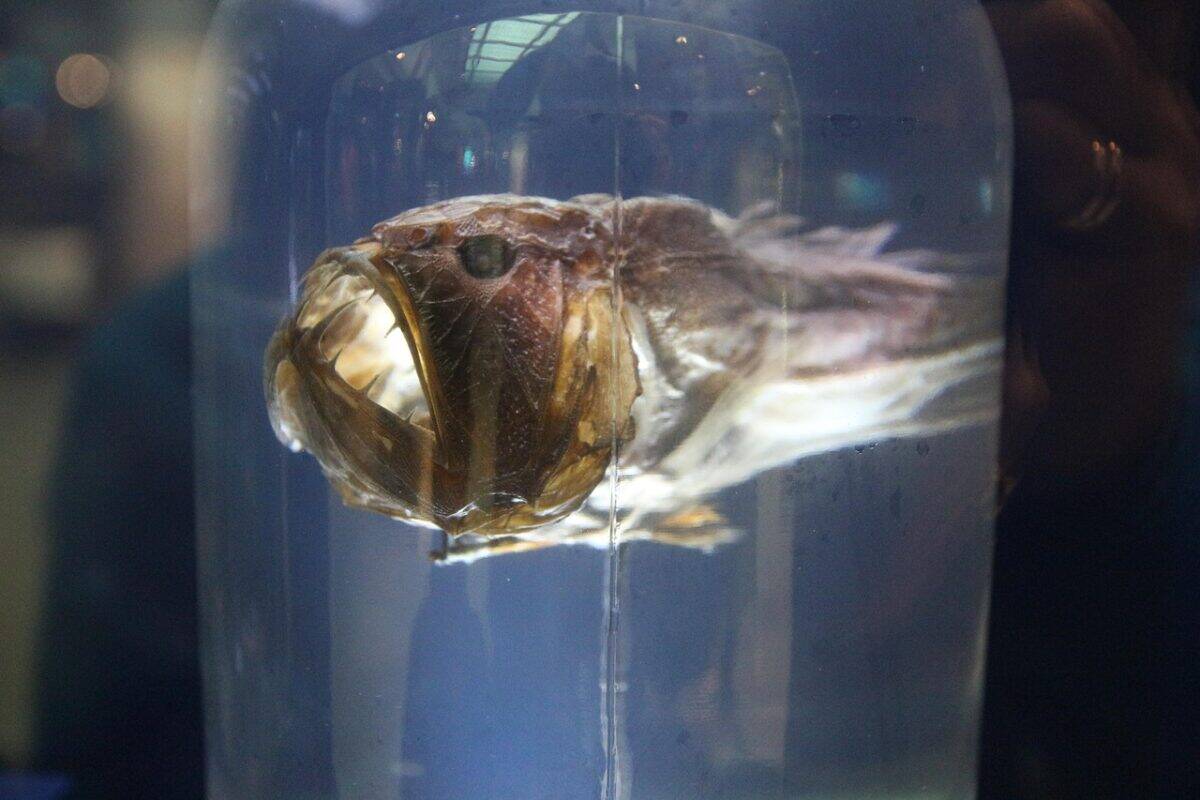
Not all deep-sea creatures produce their own light; some form remarkable partnerships with bioluminescent bacteria or other organisms. The aforementioned Hawaiian bobtail squid houses colonies of the bioluminescent bacterium Vibrio fischeri in specialized light organs. The relationship is mutualistic—the squid provides nutrients and a safe environment for the bacteria, while the bacteria provide light for counterillumination.
Some deep-sea anglerfish host bioluminescent bacteria in their fishing lure (esca), using the bacterial light to attract prey. Certain species of deep-sea fish have evolved transparent tissues in their bellies that house bioluminescent bacteria, essentially turning their digestive systems into living flashlights. These symbiotic relationships highlight the evolutionary ingenuity of deep-sea creatures, which have found ways to acquire bioluminescent capabilities without having to evolve the complex biochemical pathways themselves. Such partnerships represent sophisticated evolutionary solutions that benefit both host and symbiont while enhancing survival in the challenging deep-sea environment.
Photoproteins: The Chemistry of Light

The biochemical mechanisms behind bioluminescence involve specialized proteins called photoproteins, which differ from the luciferin-luciferase systems found in many luminous organisms. The most well-studied photoprotein is aequorin, first isolated from the crystal jelly (Aequorea victoria). Unlike the luciferin system, photoproteins bind oxygen in advance and produce light when triggered by calcium ions, allowing for more rapid and controlled light emission. This makes photoproteins particularly useful for defensive purposes where immediate response is crucial.
Jellyfish, ctenophores (comb jellies), and some deep-sea shrimp use photoproteins for their bioluminescent displays. The discovery of these proteins has had significant impacts beyond marine biology—the green fluorescent protein (GFP), also from the crystal jelly, has become an essential tool in biomedical research, earning its discoverers the Nobel Prize in Chemistry in 2008. The diverse chemistry of bioluminescence demonstrates how evolution has found multiple chemical pathways to produce light, reflecting the adaptive value of this trait in deep-sea environments.
Bioluminescent Lures: The Deceptive Use of Light
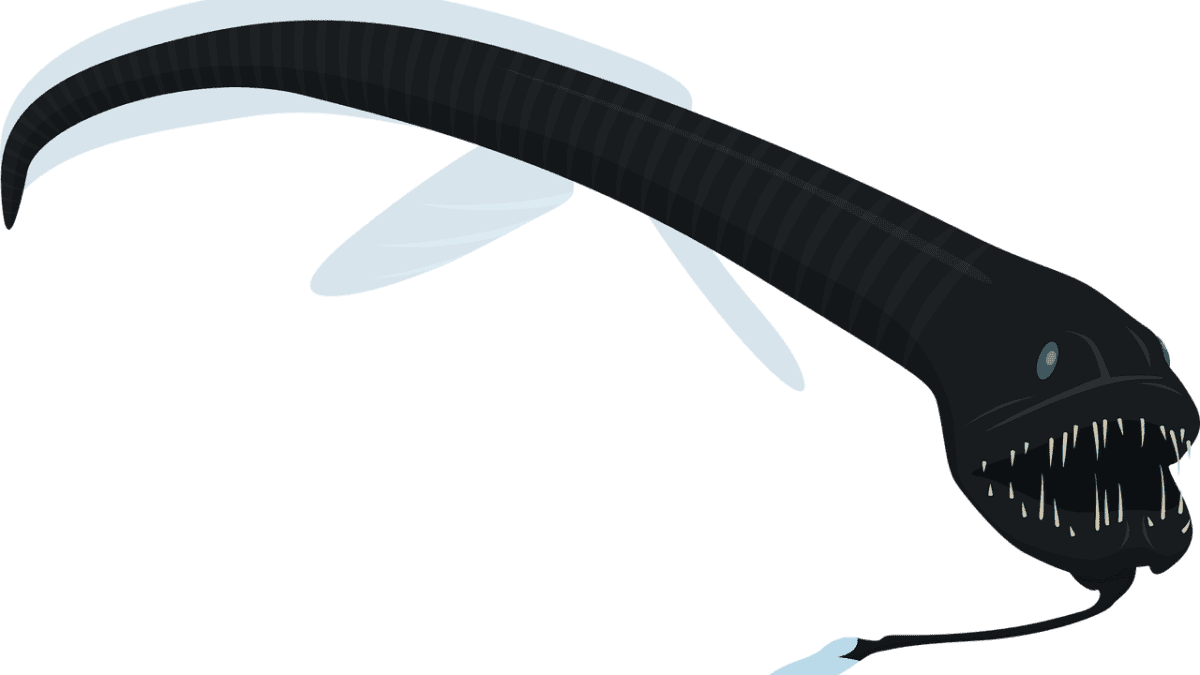
While primarily known as an offensive hunting strategy, some deep-sea creatures use bioluminescent lures defensively as well. The deep-sea dragonfish Photostomias guernei possesses a chin barbel with a light organ at its tip that it can control precisely. When threatened, it can use this light to distract or confuse predators, drawing attention away from its vulnerable body. Some species of squid have light organs that mimic the size and spacing of small fish schools when viewed from below, potentially deterring larger predators that might avoid the apparent group of fish.
The cookie-cutter shark uses its bioluminescent pattern not just for camouflage but also potentially as a lure to draw curious predators closer, at which point it can defend itself with a surprise attack. These examples show how bioluminescence can function as both weapon and shield—a dual-purpose adaptation that helps explain its widespread evolution in the deep sea despite the energy costs of producing light.
Evolutionary Arms Race: Predators Adapt Too

The bioluminescent defense mechanisms of deep-sea creatures have not evolved in isolation but as part of an ongoing evolutionary arms race with predators. Many deep-sea predators have developed specialized visual systems to detect and interpret bioluminescent signals. The stoplight loosejaw dragonfish has evolved the ability to produce and see red light, allowing it to hunt without being detected by prey that cannot perceive this wavelength. Some deep-sea crustaceans have developed eyes with multiple visual pigments that can distinguish between different colors of bioluminescence, potentially helping them identify which flashes indicate prey versus predators.
The black dragonfish (Idiacanthus atlanticus) has eyes containing a yellow filter that may help it detect bioluminescence against the background of the deep sea. As prey species evolve more sophisticated light displays, predators evolve more sophisticated ways to interpret them, creating a continuous cycle of adaptation. This evolutionary arms race has likely contributed to the remarkable diversity of bioluminescent mechanisms observed in the deep sea today.
Human Applications: Learning from Deep-Sea Light
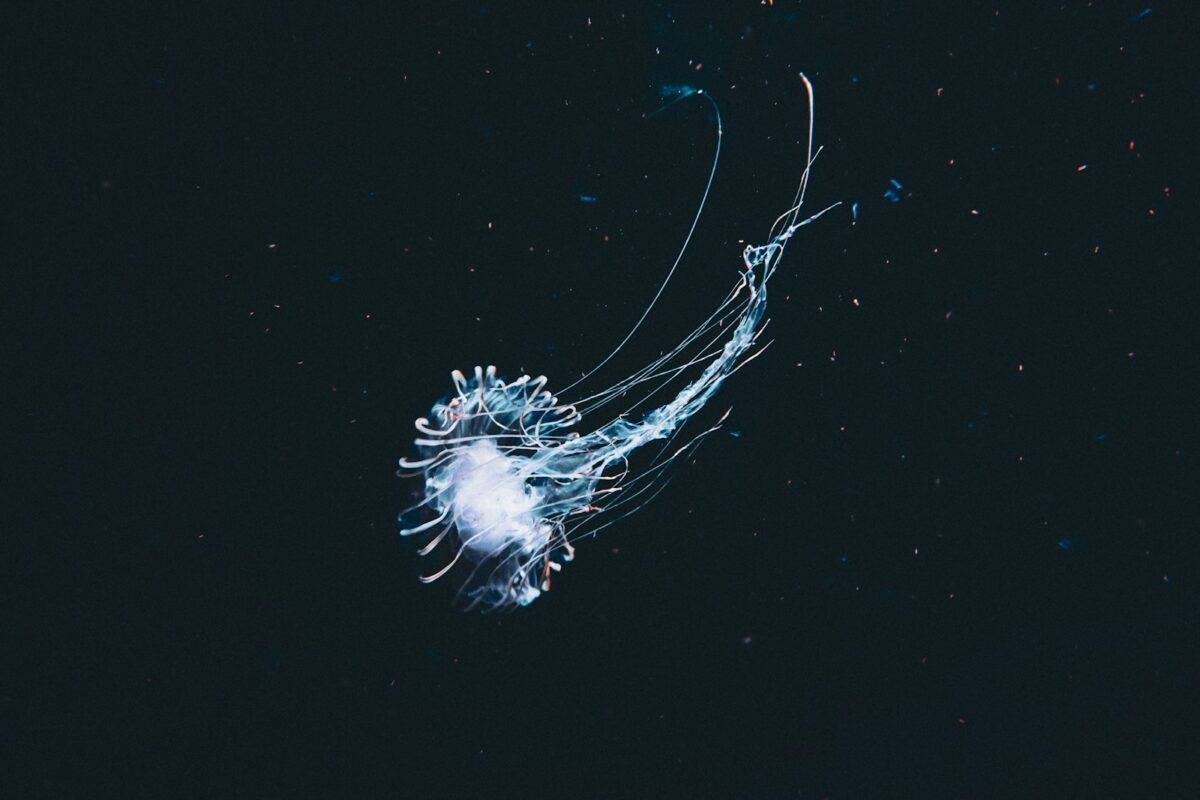
The bioluminescent defense mechanisms of deep-sea creatures have inspired numerous applications in human technology and medicine. The green fluorescent protein (GFP) discovered in the crystal jelly has revolutionized biomedical research by allowing scientists to track specific proteins and processes inside living cells. Researchers are studying the light-producing chemicals from various marine organisms to develop systems for detecting bacterial contamination in food and water. Military technology has been influenced by counterillumination techniques, leading to advanced camouflage systems.
The efficiency of bioluminescent reactions—which convert nearly 100% of energy into light with virtually no heat loss—has inspired research into more efficient lighting technologies. Medical researchers are exploring how bioluminescent compounds might be used to track cancer cells or monitor drug delivery within the body. These applications demonstrate how the bizarre defensive adaptations that evolved in the darkness of the deep sea are now illuminating pathways to technological and medical innovation in the human world.
Conclusion: Masters of Light in a World of Darkness

The bioluminescent defense strategies employed by deep-sea creatures represent some of the most remarkable adaptations in the natural world. From counter-illumination that renders creatures invisible to glowing decoys that distract predators, these mechanisms showcase the power of light as a survival tool in the ocean’s darkest realm. What makes these adaptations particularly fascinating is their counterintuitive nature—in a world where visibility often means vulnerability, these creatures have evolved to use controlled visibility as protection.
The biochemical sophistication, the diversity of mechanisms, and the precision of light control all point to the tremendous selective pressure that has shaped these defenses over millions of years of evolution. As we continue to explore the deep sea and uncover more of its bioluminescent wonders, we gain not only greater understanding of life’s adaptability but also inspiration for new technologies that may benefit humanity. In the eternal darkness of the deep ocean, life has mastered the art of creating light—not just to see, but to remain unseen.
- The Best Places to See Elephants in The Wild - August 9, 2025
- Best Countries for Spotting Rare Big Cats in the Wild - August 9, 2025
- Jaguars Are the Only Cats That Crush Skulls—Here’s Why - August 9, 2025

